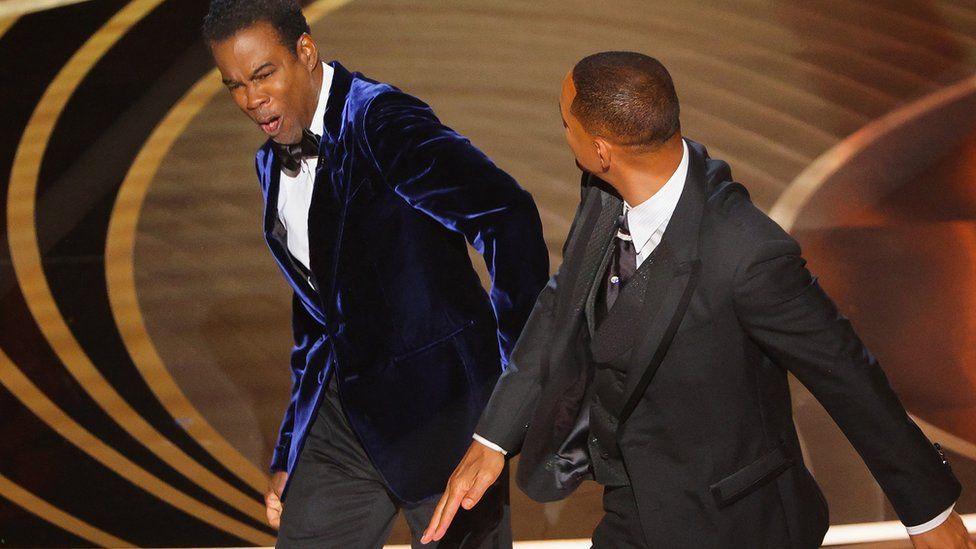The Best Accounts In Advertising

How topical is this?
I wrote this post a few days ago, but what I witnessed at the Oscars tonight helped prove my point.
Here’s a question: which category of advertising offers the best opportunities to produce brilliant, famous and (if you’re into that kind of thing) award-winning work?
Is it the heartstring-tugging, gritty edginess of the Charity and Public Service sector? Is it the in-built coolness and decades of brilliance of sportswear? Maybe it’s tech, or alcohol, or luxury.
Nope. It’s media.
Here’s why: if you are a newspaper or a TV channel or some kind of social media platform, you are the conveyers and/or creators of things the public finds very interesting. If you in turn have to advertise those very interesting things then your work has a much better chance of being interesting itself.
This gives you a massive head start over washing powder, chocolate bars or even brilliant things such as holidays. Those three things are also interesting to the public, but they are also broadly the same things, offering the same effects, year after year.
But media is different. Even if you watch BBC1 every single day, you might find yourself experiencing anything from sport to drama to horror. The Guardian covers everything from the climate crisis to sexual dysfunction. Twitter will drive stories on Black Lives Matter, murder and Taylor Swift. All of the above will run millions of words about Will and Chris’s little contretemps.
So you’re not selling these intermediaries; you’re selling what they show, and as these intermediaries want to seem as compelling as possible, you will usually be given the opportunity to advertise their most interesting content.
About ten years ago I was freelancing at 4 Creative. Their idents had just won D&AD Gold, their Paralympics coverage was just about to win D&AD Gold, and in the meantime they had to tell people about sexy Skins, superlative Sopranos and global cultural touchpoint, Friends.
One day the creatives were called into one of the meeting rooms and briefed on a new show called Black Mirror. We were told about the plot of the first episode, which sounded fascinating, especially when the planner said, ‘They’re going to kill the Princess of Wales unless the Prime Minister does something specific.”
They’d been pretty forthcoming to that point, so I wondered why they were suddenly being so coy. “What does he have to do?” I asked. The planner looked a bit sheepish before replying, “He has to fuck a pig in Trafalgar Square.”
This, dear reader, is why media clients, especially those as edgy as Channel 4, are so great to work on.
Sure, Persil Automatic washes whiter, Beanz Meanz Heinz and Autoglass repairs and replaces, but none of them has a central proposition that involves the leader of the country being blackmailed into practicing bestiality in public.
Even if you don’t get to go that far, just take a look at the best media ads of all time: decades of The Economist; years of LWT; The National Gallery (another D&AD Gold); endless great work for The Guardian, including D&AD Gold for its redesign; brilliant posters for The Times; Endless pencil-winning genius for Fox Sports; Twitter’s Cannes Grand Prix-winning billboards; more Cannes Grands Prix for The Tate Gallery; more D&AD Golds for The New York Times; D&AD Gold for BBC2’s idents; D&AD Gold for Channel 4’s logo; D&AD Golds for Channel 4’s second Paralympics campaign and Film 4’s idents. Time Out, Britart.com, Uncommon’s current ITV work…
This extends into the world of design, where books, albums and especially movies have inspired hundreds of indelible and iconic images. Just think of the Jurassic Park logo, the helmet from Full Metal Jacket, the shark rising to towards the swimmer of Jaws, The spiral of Vertigo, the characters of Trainspotting…
Media properties are almost always created to elicit an emotional reaction, so their representative communications must be able to to the same. distilling those feelings into a single image or a minute or two of film. That’s a great target to aim for, one that is rarely part of the KPIs of your average ad campaign.
On top of that, you have a never-ending churn of product. Instead of trying to breathe new life into yet another year of KFC, Travelodge or Audi, you get to sink your teeth into new shows, new issues, new stories and new people. That helps with morale, recruitment and retention, and of course fame and awards, which also help with morale, recruitment and retention.
Charity accounts were always famous for being the easy route to a prize because they dealt with issues that were inherently compelling. That meant you had to do far less heavy lifting to persuade people of your way of thinking. But there was a stigma to that: work was often created for free, as a kind of quid pro quo for the opportunity to win awards and feel a bit better about yourself. Was it proper work to proper briefs? Sometimes; sometimes not so much.
But many media accounts offer creatives a product that is already fascinating, without the suggestion that they’re doing the work as a cheap shot at grabbing a Cannes Lion.
These are real companies, looking for real success, often via work that is original, riveting and as brilliantly crafted as their own offerings.
In many ways that’s advertising’s dream, and unlike many other parts of the industry (and Will Smith’s career), it’s alive and well.